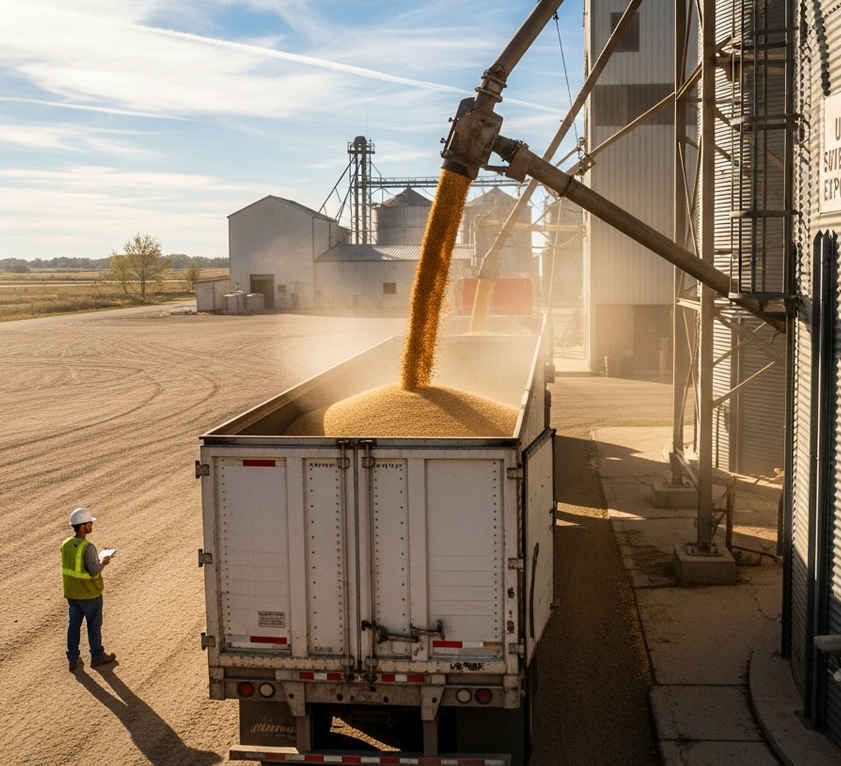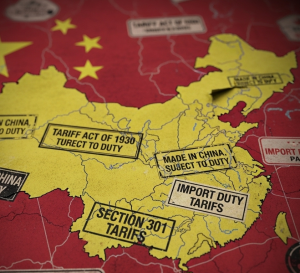Summary
Recent data on U.S. soybean exports presents a mixed but predominantly challenging picture for investors. While weekly export inspections and sales to destinations like Mexico and Indonesia show some signs of life, this is heavily overshadowed by the continued and complete absence of China from the new crop market. This lack of demand from the world’s largest soybean importer, coupled with intense and growing competition from a record Brazilian crop, is placing significant downward pressure on U.S. soybean prices.
The key takeaway for investors is that the market is grappling with a significant demand deficit, leading to a bearish outlook that is only slightly countered by strong sales to other, smaller markets and the potential for a downward revision in U.S. crop yield estimates.
The Core News (What Happened?)
In the first week of the new 2025/2026 marketing year, the U.S. Department of Agriculture (USDA) reported soybean export inspections of 452,151 metric tons for the week ending September 4, 2025. This figure is down from the previous week but represents an increase compared to the same period last year. For the week ending August 28, 2025, new crop export sales for the 2025/2026 marketing year were 818,474 metric tons. Notably, these sales were primarily to “unknown destinations,” Mexico, Japan, and Indonesia, with no significant new purchases from China. This lack of Chinese participation is a central theme in the current market, creating significant headwinds for U.S. soybean exporters as the harvest season approaches.
Context & Expectations
Market participants have been closely watching for any signs of Chinese re-engagement with the U.S. soybean market, which has been largely absent due to ongoing trade tensions and a preference for Brazilian supply. Analysts’ expectations for the recent export sales figures were varied, but the continued lack of Chinese purchases was a primary concern. Many in the market are now looking ahead to the USDA’s September 12 supply and demand report, with some analysts anticipating a potential reduction in U.S. soybean yield estimates due to a dry end to the growing season. However, even with a smaller crop, the demand side of the equation remains the most significant uncertainty. The current export sales pace is lagging behind previous years, largely due to the void left by China.
Potential Implications (The Bull vs. Bear Case)

Bull Case: A sliver of optimism in the market is being fueled by a few factors. Analysts at Morningstar note that while sales to China are absent, export sales to other destinations, such as Mexico and unknown buyers, have been consistent. There is also a belief among some traders that the USDA may lower its forecast for U.S. soybean yields in its upcoming report due to disease pressure and dry weather in parts of the Midwest during August. As stated by Dave Chatterton with Strategic Farm Marketing, expectations of lower yields could provide some support to prices. A smaller-than-expected U.S. crop could help to tighten the domestic balance sheet, offering a potential floor to prices in the face of weak export demand.

Bear Case: The bearish sentiment is overwhelmingly dominant and well-supported by current market conditions. The American Soybean Association has voiced strong concerns about the “extreme financial stress” on U.S. farmers due to the prolonged trade dispute and lack of Chinese purchases. Analysts from UkrAgroConsult report that China is expected to rely on South American soybeans until at least the end of the year, further icing out U.S. exporters. This is compounded by a record-breaking Brazilian soybean crop, which has intensified competition and allowed Brazil to solidify its position as the primary supplier to China. Terry Reilly of Marex, in a note to investors, stated a bearish short-term outlook due to China’s absence. The combination of a major buyer’s withdrawal and a formidable competitor flooding the market creates a significant headwind for U.S. soybean prices.
Key Data & Metrics
- Weekly Export Inspections (Week ending Sept. 4): 452,151 metric tons.
- Leading Destinations for Recent Inspections: Mexico and Indonesia.
- New Crop Export Sales (Week ending Aug. 28): 818,474 metric tons.
- Primary Buyers of New Crop Sales: “Unknown destinations,” Mexico, Japan, and Indonesia.
- China’s August Soybean Imports: A record 12.28 million metric tons, primarily sourced from South America.
- November 2025 Soybean Futures Price: Trading around $10.30 per bushel, down significantly over the past week.
Disclaimer: This article is for informational purposes only and does not constitute financial, investment, or legal advice. The information provided is a synthesis of publicly available data and expert analysis and should not be considered a recommendation to buy or sell any security. Investing in the stock market involves risk, including the possible loss of principal. Past performance is not indicative of future results. Readers should consult with a qualified financial advisor to determine an investment strategy that is suitable for their own personal financial situation and risk tolerance.



















